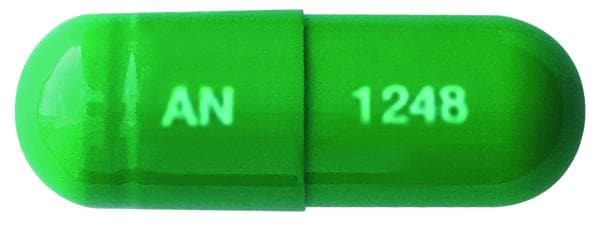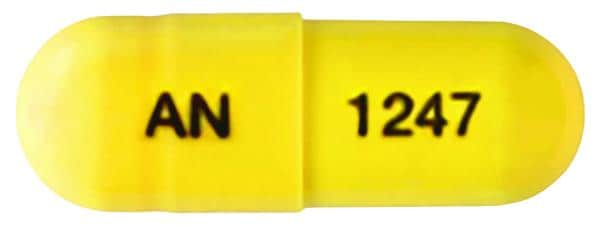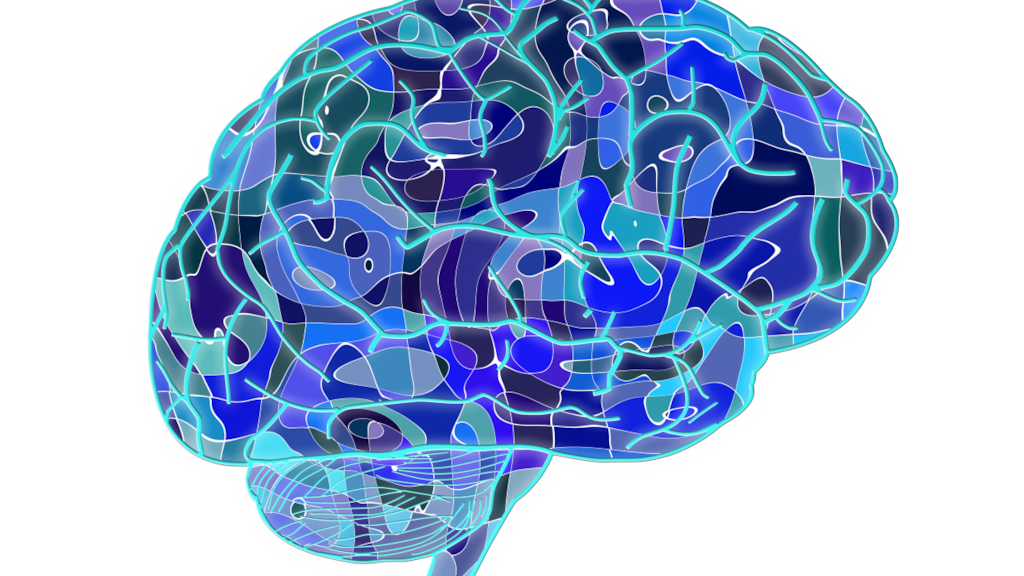Dosage Forms
Excipient information presented when available (limited, particularly for generics); consult specific product labeling.
Capsule ER 24 Hour Therapy Pack, Oral:
Namzaric: Memantine hydrochloride 7 mg and donepezil hydrochloride 10 mg (7s) & memantine hydrochloride 14 mg and donepezil hydrochloride 10 mg (7s) & memantine hydrochloride 21 mg and donepezil hydrochloride 10 mg (7s) & memantine hydrochloride 28 mg and donepezil hydrochloride 10 mg (7s) (28 ea) [contains brilliant blue fcf (fd&c blue #1), corn starch, fd&c yellow #6 (sunset yellow)]
Capsule Extended Release 24 Hour, Oral:
Namzaric: Memantine hydrochloride 14 mg and donepezil hydrochloride 10 mg [contains brilliant blue fcf (fd&c blue #1)]
Namzaric: Memantine hydrochloride 28 mg and donepezil hydrochloride 10 mg [contains brilliant blue fcf (fd&c blue #1), corn starch]
Namzaric: Memantine hydrochloride 7 mg and donepezil hydrochloride 10 mg [contains brilliant blue fcf (fd&c blue #1), corn starch, fd&c yellow #6 (sunset yellow)]
Namzaric: Memantine hydrochloride 21 mg and donepezil hydrochloride 10 mg [contains corn starch, fd&c yellow #6 (sunset yellow)]
Pharmacology
Mechanism of Action
Memantine: Glutamate, the primary excitatory amino acid in the CNS, may contribute to the pathogenesis of Alzheimer disease (AD) by overstimulating various glutamate receptors leading to excitotoxicity and neuronal cell death. Memantine is an uncompetitive antagonist of the N-methyl-D-aspartate (NMDA) type of glutamate receptors, located ubiquitously throughout the brain. Under normal physiologic conditions, the (unstimulated) NMDA receptor ion channel is blocked by magnesium ions, which are displaced after agonist-induced depolarization. Pathologic or excessive receptor activation, as postulated to occur during AD, prevents magnesium from reentering and blocking the channel pore resulting in a chronically open state and excessive calcium influx. Memantine binds to the intra-pore magnesium site, but with longer dwell time, and thus functions as an effective receptor blocker only under conditions of excessive stimulation; memantine does not affect normal neurotransmission.
Donepezil: Alzheimer disease is characterized by cholinergic deficiency in the cortex and basal forebrain, which contributes to cognitive deficits. Donepezil reversibly and noncompetitively inhibits centrally-active acetylcholinesterase, the enzyme responsible for hydrolysis of acetylcholine. This appears to result in increased concentrations of acetylcholine available for synaptic transmission in the central nervous system.
Use: Labeled Indications
Alzheimer disease (moderate to severe): Treatment of moderate to severe dementia of the Alzheimer type in patients stabilized on donepezil 10 mg once daily.
Contraindications
Hypersensitivity to memantine, donepezil, piperidine derivatives, or any component of the formulation
Documentation of allergenic cross-reactivity for cholinesterase inhibitors is limited. However, because of similarities in chemical structure and/or pharmacologic actions, the possibility of cross-sensitivity cannot be ruled out with certainty.
Dosage and Administration
Dosing: Adult
Alzheimer dementia (moderate to severe): Oral:
Patients stabilized on donepezil 10 mg once daily and not currently on memantine: Initial: Memantine extended release (ER) 7 mg/donepezil 10 mg once daily in the evening. Increase dose in increments of memantine ER 7 mg at intervals of ≥1 week to maintenance dose of memantine ER 28 mg/donepezil 10 mg once daily based on patient response and tolerability. Maximum dose: memantine ER 28 mg/ donepezil 10 mg once daily.
Patients stabilized on memantine (10 mg twice daily or 28 mg ER once daily) and donepezil 10 mg: Initial: Memantine ER 28 mg/donepezil 10 mg once daily in the evening. Initiate combination therapy the day after the last dose of memantine and donepezil administered separately.
Dosing: Geriatric
Refer to adult dosing.
Administration
Oral: Administer in the evening without regard to meals. Swallow capsule whole; do not divide, chew, or crush. May open capsule and sprinkle entire contents on applesauce; swallow immediately. Do not divide contents of capsule into separate doses.
Storage
Store at 20°C to 25°C (68°F to 77°F); excursions are permitted to 15°C to 30°C (59°F to 86°F). Protect from light.
Memantine and Donepezil Images
Drug Interactions
Alkalinizing Agents: May increase the serum concentration of Memantine. Monitor therapy
Amifampridine: Acetylcholinesterase Inhibitors may enhance the therapeutic effect of Amifampridine. Amifampridine side effects may also be increased. Amifampridine may enhance the therapeutic effect of Acetylcholinesterase Inhibitors. Acetylcholinesterase inhibitor side effects may also be increased. Monitor therapy
Anticholinergic Agents: Acetylcholinesterase Inhibitors may diminish the therapeutic effect of Anticholinergic Agents. Anticholinergic Agents may diminish the therapeutic effect of Acetylcholinesterase Inhibitors. Monitor therapy
Antipsychotic Agents: Acetylcholinesterase Inhibitors (Central) may enhance the neurotoxic (central) effect of Antipsychotic Agents. Severe extrapyramidal symptoms have occurred in some patients. Monitor therapy
Benoxinate: Acetylcholinesterase Inhibitors may enhance the therapeutic effect of Benoxinate. Specifically, the effects of benoxinate may be prolonged. Monitor therapy
Benperidol: Memantine may diminish the therapeutic effect of Benperidol. Monitor therapy
Beta-Blockers: Acetylcholinesterase Inhibitors may enhance the bradycardic effect of Beta-Blockers. Exceptions: Levobunolol; Metipranolol. Monitor therapy
Bradycardia-Causing Agents: May enhance the bradycardic effect of other Bradycardia-Causing Agents. Monitor therapy
Carbonic Anhydrase Inhibitors: May increase the serum concentration of Memantine. Exceptions: Brinzolamide; Dorzolamide. Monitor therapy
Ceritinib: Bradycardia-Causing Agents may enhance the bradycardic effect of Ceritinib. Management: If this combination cannot be avoided, monitor patients for evidence of symptomatic bradycardia, and closely monitor blood pressure and heart rate during therapy. Exceptions are discussed in separate monographs. Consider therapy modification
Cholinergic Agonists: Acetylcholinesterase Inhibitors may enhance the adverse/toxic effect of Cholinergic Agonists. Monitor therapy
Corticosteroids (Systemic): May enhance the adverse/toxic effect of Acetylcholinesterase Inhibitors. Increased muscular weakness may occur. Monitor therapy
Dipyridamole: May diminish the therapeutic effect of Acetylcholinesterase Inhibitors. Monitor therapy
Erdafitinib: May increase the serum concentration of OCT2 Substrates. Monitor therapy
Fexinidazole [INT]: Bradycardia-Causing Agents may enhance the arrhythmogenic effect of Fexinidazole [INT]. Avoid combination
Haloperidol: QT-prolonging Agents (Indeterminate Risk - Caution) may enhance the QTc-prolonging effect of Haloperidol. Monitor therapy
Ivabradine: Bradycardia-Causing Agents may enhance the bradycardic effect of Ivabradine. Monitor therapy
Lacosamide: Bradycardia-Causing Agents may enhance the AV-blocking effect of Lacosamide. Monitor therapy
Midodrine: May enhance the bradycardic effect of Bradycardia-Causing Agents. Monitor therapy
Neuromuscular-Blocking Agents (Nondepolarizing): Acetylcholinesterase Inhibitors may diminish the neuromuscular-blocking effect of Neuromuscular-Blocking Agents (Nondepolarizing). Monitor therapy
NMDA Receptor Antagonists: May enhance the adverse/toxic effect of Memantine. Monitor therapy
QT-prolonging Agents (Highest Risk): QT-prolonging Agents (Indeterminate Risk - Caution) may enhance the QTc-prolonging effect of QT-prolonging Agents (Highest Risk). Management: Monitor for QTc interval prolongation and ventricular arrhythmias when these agents are combined. Patients with additional risk factors for QTc prolongation may be at even higher risk. Monitor therapy
Ruxolitinib: May enhance the bradycardic effect of Bradycardia-Causing Agents. Management: Ruxolitinib Canadian product labeling recommends avoiding use with bradycardia-causing agents to the extent possible. Monitor therapy
Siponimod: Bradycardia-Causing Agents may enhance the bradycardic effect of Siponimod. Management: Avoid coadministration of siponimod with drugs that may cause bradycardia. Consider therapy modification
Succinylcholine: Acetylcholinesterase Inhibitors may increase the serum concentration of Succinylcholine. Management: Consider alternatives to this combination due to a risk of prolonged neuromuscular blockade. Consider therapy modification
Tafenoquine: May increase the serum concentration of OCT2 Substrates. Management: Avoid use of OCT2 substrates with tafenoquine, and if the combination cannot be avoided, monitor closely for evidence of toxicity of the OCT2 substrate and consider a reduced dose of the OCT2 substrate according to that substrate's labeling. Consider therapy modification
Terlipressin: May enhance the bradycardic effect of Bradycardia-Causing Agents. Monitor therapy
Tofacitinib: May enhance the bradycardic effect of Bradycardia-Causing Agents. Monitor therapy
Trimethoprim: May enhance the adverse/toxic effect of Memantine. Specifically, the risk of myoclonus and/or delirium may be increased. Trimethoprim may increase the serum concentration of Memantine. Memantine may increase the serum concentration of Trimethoprim. Monitor therapy
Adverse Reactions
See individual agents.
Warnings/Precautions
Concerns related to adverse effects:
- Cardiovascular effects: Cholinesterase inhibitors may have vagotonic effects which may cause bradycardia and/or heart block with or without a history of cardiac disease; syncopal episodes have been associated with donepezil.
- GI effects: May cause dose-related diarrhea, nausea, and/or vomiting; usually resolves in 1 to 3 weeks.
- Neuroleptic malignant syndrome: Rare cases of neuroleptic malignant syndrome (NMS) have been reported (Matsumoto 2004; Warwick 2008). Discontinuation of donepezil therapy may be necessary in patients presenting with symptoms of NMS (eg, hyperthermia, irregular pulse or blood pressure, cardiac arrhythmia, diaphoresis, muscle rigidity, mental status changes, elevated creatine phosphokinase [CPK], unexplained high fever without additional symptoms).
- Rhabdomyolysis: Rare cases of rhabdomyolysis (including acute renal failure) have been reported after a few months of therapy (Sahin 2014) or in the days following therapy initiation and dose increase (Aricept Canadian product monograph 2014). Use with caution in patients with risk factors for rhabdomyolysis (eg, concomitant medications associated with rhabdomyolysis, history of muscular disorders, uncontrolled hypothyroidism, renal/hepatic impairment). Discontinuation of therapy may be necessary for marked elevation of CPK levels and/or symptoms (eg, muscle pain, tenderness or weakness, malaise, fever, dark urine) suggesting rhabdomyolysis.
Disease-related concerns:
- Cardiac conduction abnormalities: Use with caution in patients with sick-sinus syndrome, bradycardia, or conduction abnormalities. Alzheimer treatment guidelines consider bradycardia to be a relative contraindication for use of centrally active cholinesterase inhibitors (APA [Rabins 2007].
- Peptic ulcer disease: Use with caution in patients at risk of ulcer disease (eg, previous history or NSAID use); cholinesterase inhibitors may increase gastric acid secretion. Monitor for symptoms of bleeding.
- Renal impairment: Use caution in patients with renal impairment; reduce dose in patients with severe renal impairment.
- Respiratory disease: Use with caution in patients with COPD and/or asthma.
- Seizure disorder: Use with caution in patients with a history of seizure disorder; cholinomimetics may potentially cause generalized seizures, although seizure activity may also result from Alzheimer disease.
- Urinary tract obstruction: Use with caution in patients with bladder outlet obstruction or prostatic hyperplasia; cholinomimetics may cause or worsen outflow obstructions, including possible exacerbation of BPH symptoms (APA [Rabins 2007]).
Concurrent drug therapy issues:
- Drug-drug interactions: Potentially significant interactions may exist, requiring dose or frequency adjustment, additional monitoring, and/or selection of alternative therapy. Consult drug interactions database for more detailed information.
Other warnings/precautions:
- Urine pH: Clearance is significantly reduced by alkaline urine; use caution with medications, dietary changes, or patient conditions which may alter urine pH.
Monitoring Parameters
Mental status; general function (eg, activities of daily living); symptoms of active or occult GI bleeding; symptoms of GI intolerance
Pregnancy
Pregnancy Considerations
Adverse events have been observed in some animal reproduction studies. See individual agents.
Patient Education
What is this drug used for?
- It is used to treat dementia in people with Alzheimer's disease.
Frequently reported side effects of this drug
- Diarrhea
- Lack of appetite
- Muscle cramps
- Nausea
- Vomiting
- Loss of strength and energy
- Insomnia
Other side effects of this drug: Talk with your doctor right away if you have any of these signs of:
- Black, tarry, or bloody stools
- Trouble urinating
- Severe dizziness
- Passing out
- Chills
- Sore throat
- Trouble breathing
- Seizures
- Severe headache
- Abdominal pain
- Heartburn
- Slow heartbeat
- Abnormal heartbeat
- Bruising
- Vomiting blood
- Signs of a significant reaction like wheezing; chest tightness; fever; itching; bad cough; blue skin color; seizures; or swelling of face, lips, tongue, or throat.
Note: This is not a comprehensive list of all side effects. Talk to your doctor if you have questions.
Consumer Information Use and Disclaimer: This information should not be used to decide whether or not to take this medicine or any other medicine. Only the healthcare provider has the knowledge and training to decide which medicines are right for a specific patient. This information does not endorse any medicine as safe, effective, or approved for treating any patient or health condition. This is only a brief summary of general information about this medicine. It does NOT include all information about the possible uses, directions, warnings, precautions, interactions, adverse effects, or risks that may apply to this medicine. This information is not specific medical advice and does not replace information you receive from the healthcare provider. You must talk with the healthcare provider for complete information about the risks and benefits of using this medicine.





